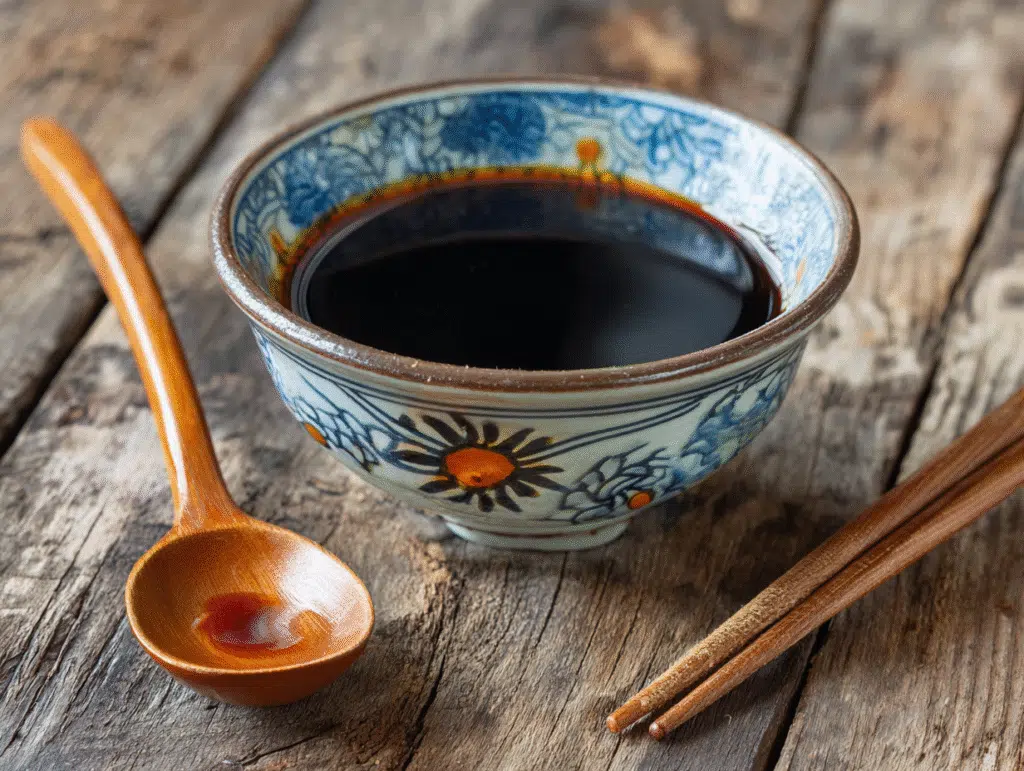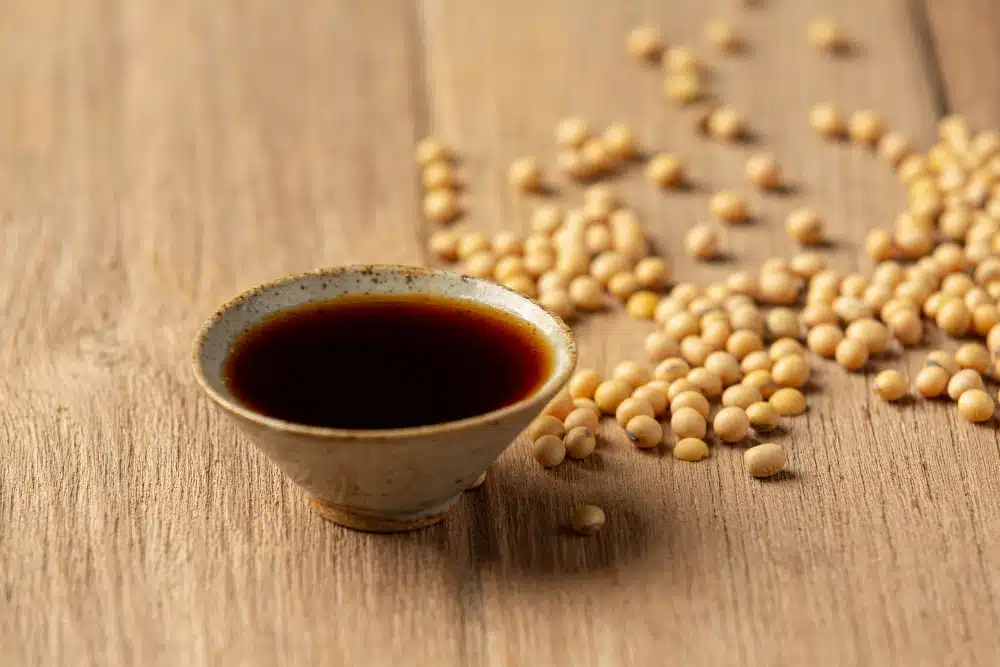Introduction
Tamari Substitute – When it comes to Asian cuisine, two condiments often come to mind: tamari vs soy sauce. Both are beloved for their salty, umami-rich flavor and are staples in stir-fries, sushi, marinades, and dipping sauces. Yet, while they might look almost identical, tamari and soy sauce are not the same. The differences go beyond taste—they impact your cooking, dietary preferences, and even health choices. In this article, we’ll dive deep into tamari vs soy sauce, explore how they’re made, their nutritional value, gluten-free status, and even what makes a good tamari substitute if you can’t find it at the store.
What Is Soy Sauce?
How It’s Made
- Soybeans are fermented with wheat, salt, water, and mold cultures.
- The mixture ferments for months, developing its signature salty, umami taste.
- Varieties include light, dark, sweet, and low-sodium soy sauce.
Flavor Profile
What Is Tamari?
Tamari is a Japanese variety of soy sauce, traditionally a byproduct of miso paste production.
How It’s Made
- Primarily made with soybeans and little to no wheat.
- Fermented longer than standard soy sauce, leading to a smoother flavor.
- Often marketed as gluten-free soy sauce (though always check the label).
Flavor Profile
- Less salty and more balanced
- Richer umami flavor
- Thicker consistency, making it ideal for dipping
👉 Can’t find tamari? Don’t worry—we’ll share the best tamari substitute options later in this guide.
Tamari vs Soy Sauce: Key Differences
1. Ingredients
- Soy Sauce: Soybeans + wheat + salt + water
- Tamari: Mostly soybeans, little to no wheat
👉 If you’re avoiding gluten, tamari is usually the safer choice—or look for a reliable tamari substitute.
2. Flavor
- Soy Sauce: Saltier, lighter, and sometimes sharper
- Tamari: Rich, smooth, and slightly less salty
3. Nutrition
Both tamari and soy sauce are low in calories but high in sodium.
Per 1 tablespoon (approximate):
- Calories: 10
- Protein: 2 g
- Sodium: 800–1,000 mg
👉 Tamari generally has slightly more protein due to higher soybean content.
4. Cooking Uses
- Soy Sauce: Best for stir-fries, marinades, soups, and general seasoning.
- Tamari: Excellent for dipping (sushi, dumplings), gluten-free recipes, and richer sauces.
Practical Tips: Choosing Between Tamari and Soy Sauce
When to Use Soy Sauce
- Everyday stir-fries and marinades
- Recipes where saltiness is essential
- When gluten isn’t an issue
When to Use Tamari
- Dipping sauces (thanks to its thicker, smoother texture)
- Gluten-free diets
- Recipes where you want deeper, rounder umami

Step-by-Step Guide: How to Substitute Tamari for Soy Sauce (and Vice Versa)
- Check Salt Levels
- If using tamari instead of soy sauce, reduce added salt in the recipe.
- Mind Gluten-Free Needs
- Use certified gluten-free tamari for celiac or gluten-sensitive diets.
- Flavor Intensity
- Tamari has a bolder flavor, so you can use slightly less compared to soy sauce.
- 1:1 Ratio (Generally Safe)
- In most recipes, substitute tamari for soy sauce at equal measurements.
👉 And if tamari isn’t available, consider a tamari substitute like coconut aminos, liquid aminos, or even a reduced-sodium soy sauce.
Best Tamari Substitute Options
If you don’t have tamari on hand, here are some excellent alternatives:
- Coconut Aminos – Naturally gluten-free, lower in sodium, and slightly sweeter.
- Liquid Aminos – Similar in flavor to soy sauce, gluten-free, and rich in amino acids.
- Reduced-Sodium Soy Sauce – Works in a pinch, though it’s not wheat-free.
- Homemade Blend – Mix soy sauce with a little miso paste for a closer tamari flavor.
👉 These tamari substitute options ensure you won’t compromise on flavor, even if your pantry is missing the real thing.
Tamari vs Soy Sauce in Different Cuisines
Japanese Cuisine
- Tamari: More common in miso-based dishes and dipping sauces.
- Soy Sauce: Widely used in ramen broths and teriyaki sauce.
Chinese Cuisine
- Soy Sauce: Essential for stir-fried rice, dumplings, and noodle dishes.
- Tamari: Rarely used, but works as a substitute.
Western Cooking
- Tamari: Preferred in gluten-free and fusion recipes.
- Soy Sauce: The go-to for quick seasoning and marinades.
Health Considerations
- Sodium Content: Both are high in sodium. Look for low-sodium versions if needed.
- Gluten-Free Needs: Tamari is usually gluten-free, while soy sauce contains wheat.
- Fermentation Benefits: Fermented condiments may support gut health in moderation.
FAQ: Tamari vs Soy Sauce
1. Is tamari healthier than soy sauce?
Tamari is slightly higher in protein and often gluten-free, but sodium levels are similar.
2. Can I use tamari instead of soy sauce in stir-fries?
Yes, tamari works well in stir-fries, just be mindful of its stronger umami flavor.
3. Is tamari always gluten-free?
Not always. Some tamari brands may contain traces of wheat. Always read labels.
4. What is the best tamari substitute for gluten-free cooking?
Coconut aminos is the best tamari substitute for gluten-free diets.
5. Which tastes better: tamari or soy sauce?
It depends. Soy sauce is saltier and lighter, while tamari is richer and smoother.
6. Can I use soy sauce in sushi instead of tamari?
Yes, but tamari is traditionally preferred as a dipping sauce due to its thicker texture.
Conclusion
When it comes to tamari vs soy sauce, the choice depends on your taste preference and dietary needs. Tamari is richer, smoother, and usually gluten-free, making it perfect for dipping and gluten-sensitive eaters. Soy sauce is saltier, lighter, and versatile in stir-fries, soups, and marinades. Both bring umami depth to countless dishes.
👉 If you can’t find tamari, don’t worry—there’s always a great tamari substitute like coconut aminos or liquid aminos to save your recipe.






